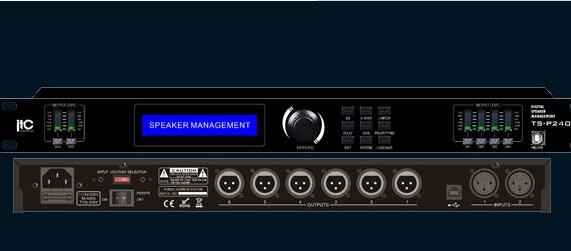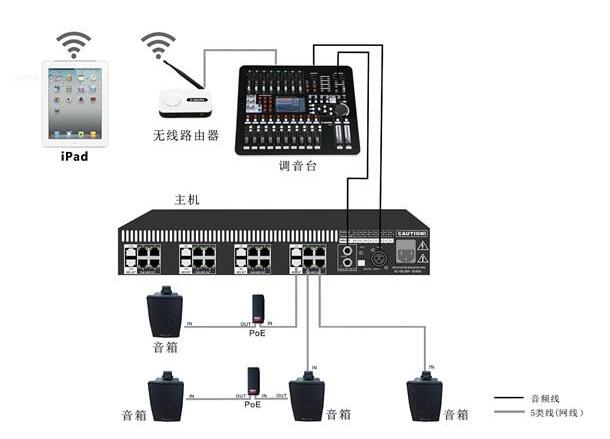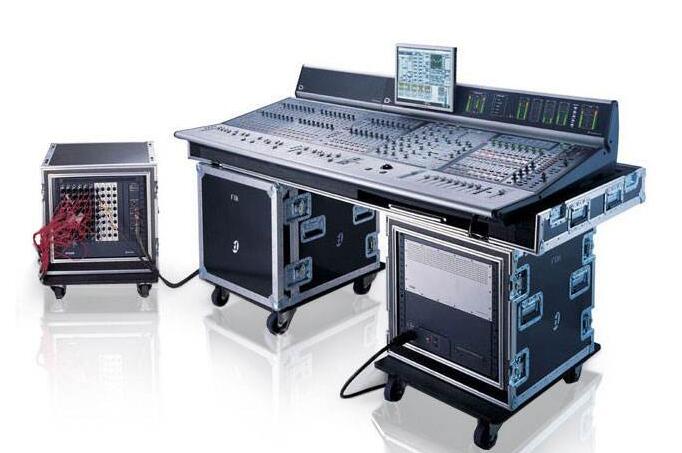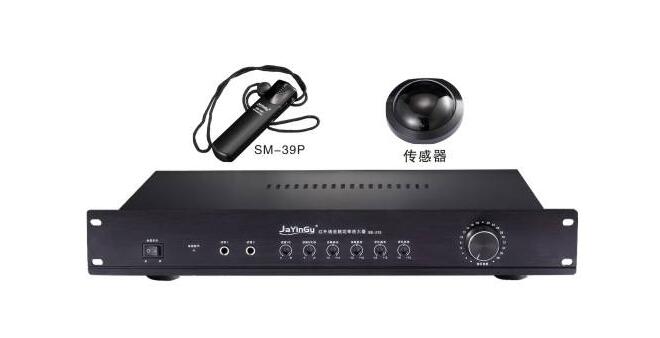The professional audio system is an integrated system that integrates acoustic, optical, electrical, magnetic and mechanical technologies in electronic technology and is a "high-precision" class product. Due to its complex internal structure. Therefore professional audio repair is a very technical job. For the sound maintenance personnel, judging the fault location is often more difficult than the repair work. It can be said to be "seven-point judgement and three-point repair." This article mainly explains the overhaul of sound reinforcement system equipment. First of all, it introduces the common faults of sound reinforcement system equipment. Secondly, it describes the methods of repair and maintenance of sound reinforcement system equipment. Finally, it introduces the judgment and elimination of equipment failure in the sound reinforcement system. Take a look.

1. The sound reinforcement system sometimes emits a "click" sound, especially during the playing of music.
2, sound amplification system without sound
3, when the sound reinforcement system is muted, the hum sound is serious
4. During the process of sound reinforcement, a group of speakers or two groups of speakers on the left and right channel ports suddenly sounds silent
5. In the karaoke hall, the vocals of the singers are separated from the playing music accompaniment and are not merged.
6. When the audio system and the Lighting system are operating at the same time, the acoustic noise of the sound system is very loud. After the lighting system is turned off, the sound system operation is inaudible.
7. The effect of singing sounds sounds small and not full
8, the effect of singing voice processing did not join
9, microphone into the mixer silent signal
10, handheld stage wired microphone, slightly swinging motion, sound box issued a "click" sound
11, left and right channel speaker sound unbalanced
12. When a single microphone is connected, the volume is larger. When two microphones are connected, the volume decreases
13. After the wireless microphone is turned on, aim at the microphone and speak without sound
14, left and right channel speakers are split type, each speaker sound uneven
15, the left and right audio channels have output, no sound signal output after entering the mixer
16, sound source sound, sound reinforcement system speakers silent
17, left and right channel speakers which way tweeter (high-frequency head) no high

First, visual inspection
Visual inspection is performed immediately after the power is turned off. Instead of using instruments and meters, we can use intuitive feelings to mobilize four kinds of sensory characteristics such as sight, hearing, smell, and touch. Although this inspection method is less accurate, it is faster and the visual inspection method is especially useful for power failure inspection.
1, see
Observe the machine or component and its external structure. Look at the key switch, interface, and whether the indicator light is loose or not, whether the circuit board is detached or not, whether there is any welding, discoloration, crack, burst, etc., and whether the fuse blows, ignites, smokes, deforms, and does not get stuck. Problems such as the use of eyes, direct recognition and judgment.
2, listen
Gently turn the machine or component and swing it to see if there are any parts scattered or the screws fall off and if there is a knocking sound. Whether to make an uninterrupted flip or abnormal sound (when energized). If there are these phenomena, faults may appear in these places
3, smell
Use the nose to smell the burnt odor, find the source of the odor, and malfunction may cause a flammable smell.
4, touch
Hand touch the transformer shell (after power off), do not touch the terminals, because sometimes the charging capacitor exists, the voltage is very high, endangering safety. Feel that if it exceeds the normal temperature and it is hot, it cannot be touched. Whether the power tube is overheated or cold. Adjust the tube for overheating or cold heat. If there are these phenomena, the problem may appear in these places.

Second, heuristics
The heuristic method uses the means of comparison, segmentation, substitution, simulation, etc. for the suspected part of the circuit to find the fault and then eliminate it. The specific method is as follows:
1, compare
Find a machine of the same type as the faulty machine, use the left and right channel components of the same machine in a professional device, measure the voltage, resistance and current of the corresponding part and compare them to find out where the fault is.
2, split
Disconnect some part of the circuit from other parts, connect the external power supply, and inject signals to make judgments.
3, alternative
Replace the suspect component with a good one, or swap the left and right channel components, especially for integrated circuit blocks. If the machine returns to normal after the parts are exchanged, it indicates that the part is defective or damaged.
4, simulation
Temperature simulation, the use of hair dryer heating, or cooling with alcohol, temperature performance inspection, vibration simulation is the use of fine plastic insulation rods hit some parts, look at the working conditions of the circuit, you can find some of the phenomenon of false welding, check the fault . This method is generally performed by a skilled person, otherwise it is prone to failure.

Third, the static parameters measurement method
The measurement of static parameters must hold the maintenance manual of the manufacturer's production equipment, indicate the static operating current or voltage of each component terminal, and use a multimeter to measure the current, voltage, or resistance value of each part of the circuit to see if it is consistent with the nominal value.
1, resistance measurement
Use a multimeter's ohm file × 100 or × 1K file, do not use R × 10K file, because this file is connected to a 22.5 volt battery on the meter, which is inappropriate for transistor measurement and can easily damage the transistor. In the event of a power failure, if a charge capacitor is present, it must be fully discharged with an insulated screw cone. The resistance in the measurement line must be welded to one end, otherwise the measurement is inaccurate.
2, voltage measurement
In making this measurement, consider the effect of the internal resistance of the multimeter on the measured value. It should be noted that the static measurement value and the dynamic measurement value (when adding signals) are not the same. When measuring the static state of each transistor pin, whether the voltage at the resistor or capacitor is consistent with the nominal value, the relative voltage of the transistor pin can determine whether the pipe is damaged.
3, current measurement
When using direct measurement, connect the ammeter to the circuit and check the current. When indirect measurement is used, the voltage at both ends is measured, and the voltage value is removed by the resistance value to obtain the current value.
In addition to the static parameter measurement, a dynamic inspection method can also be used to use a signal source and an oscilloscope to directly inspect the injected signal and judge the circuit. This method is straightforward and accurate, and it is not easy to damage components. It can also adjust and proofread the circuit and mechanical structure.

First, the judgment and exclusion of silent failure
(1) Check whether all devices are turned on, whether the volume control buttons of each device have been adjusted to the appropriate position, whether the switches of each channel have been strobed, and whether the connection lines are connected correctly and reliably.
(2) If there is no sound, you need to check it step by step. You can check backwards and forwards, or you can check from front to back. When you check from front to back, you first use the monitor to check if the signal has entered the mixer, and then Can use voltmeter, multimeter step by step, until the detection of a silent level, and to determine whether the device has no output, or connection problems, such as the actual equipment failure, you should replace the standby equipment to save emergency, if it belongs to the peripheral equipment Failure, in the absence of a backup device, can directly skip the failed device, such as the equalizer fails, you can pull the input equalizer input plug to the input socket of the next level device If there is a failure in one of the input channels of the mixer, you can change the input channel until the end of the activity. If there is a problem with the connection line, change the backup line first when it is urgent, and then when there is time. If you are not familiar with the principle of the internal structure of the equipment, do not repair it by hand so as to prevent minor faults from becoming major faults. When using a condenser microphone, check whether the commutating power is applied.
Second, the loud noise judgments and exclusion
The humming is often caused by poor grounding or wrong, the equipment of the system is not on the same power grid, and the ground potential is seriously different. This is caused by the disconnection of the shielding layer of the second connecting wire, or the improper connection of the shielded wire, and the formation of a ground current loop also causes a fault. The sound is loud, so these aspects should be scrutinized. If necessary, separate audio transformers should be added so that the “ground†segments between the front and rear equipment can be opened and the signal is still open, especially when the two systems are connected. Because the two systems do not use the same power source, the ground potential between the two systems may be different, and sometimes even very serious. This may cause significant hate. The squeak caused by this reason is very easy to judge, as long as the two systems will be The connection between the signal cable plugs is removed from the system and the squeak disappears immediately. If the confirmation hum is due to the hum caused by the difference in the ground potentials of the two system power supplies, this can be done by isolating the "ground" of the two systems. The method is usually achieved by adding an isolation audio transformer. The technical requirements for the isolation audio transformer are the same for the first and second windings. Wound wire grid, the turns ratio of 1: 1, the input and output impedances are 600 ohms, harmonic distortion ≤1%, superior frequency response in the range of 40Hz ~ 16kHz ± 0.5db, power is not less than 20mW.
Third, the judgment and elimination of clipping distortion
First, check whether the clipping indicator on each device is on. If you do not find that the clipping indicator is continuously on, you can choose to use a device in the middle to lower the volume to determine if the front of the device has been cut. The wave distortion is still the clipping distortion that is generated behind the device. In this way, the volume controller can be adjusted several times to determine which level the clipping is coming from. In general, it is caused by excessive signal intensity. The volume level should be lowered on the pre-equipment. In the case of equipment failures (such as work on the equipment, abnormal power supply, or open circuit in the negative feedback path), the equipment must be replaced.
SHENZHEN CHONDEKUAI TECHNOLOGY CO.LTD , https://www.szfourinone.com